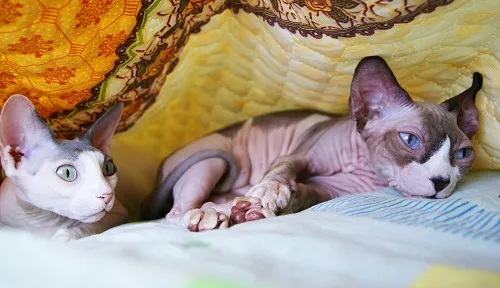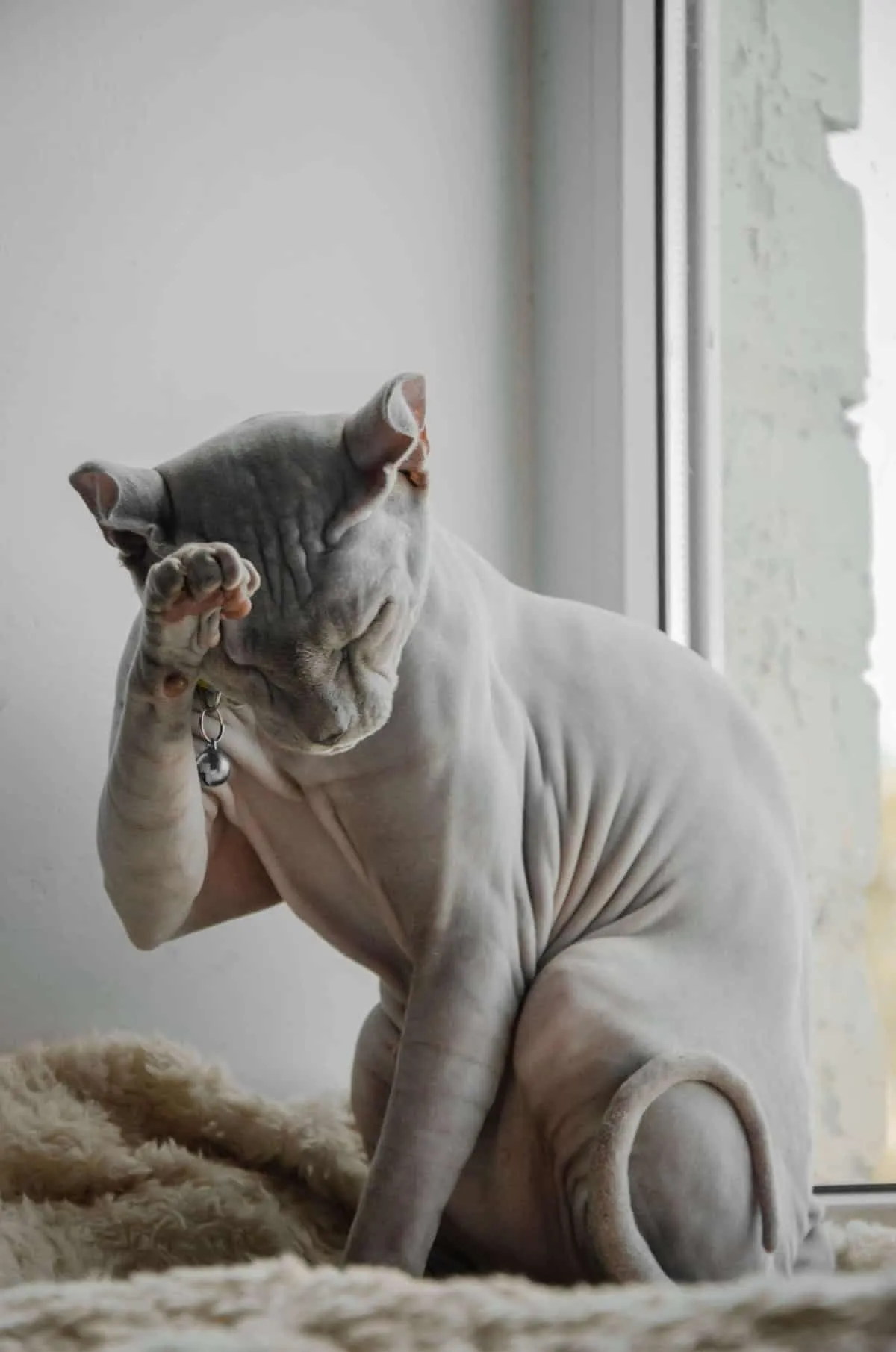Sphynx cats, with their unique hairless appearance and warm, wrinkly skin, often captivate new owners at first sight—or sometimes take a moment to grow on you, just like my experience meeting Cleopatra, a friend’s adorable kitten. These extraordinary felines, often mistaken for ancient Egyptian relics, actually hail from modern breeding efforts and demand dedicated care to thrive. If you’re considering adopting a Sphynx cat or already sharing your home with one, understanding their origins, high-maintenance grooming needs, and affectionate personality is essential for their health and happiness.
For those exploring various healthy cat breeds, Sphynx cats stand out due to their distinctive traits and social nature.
Origins of Sphynx Cats: From Canada, Not Egypt
Contrary to popular belief, Sphynx cats did not originate in Egypt despite their name evoking the iconic Sphinx statue. The breed traces back to Canada in the 1960s, when a hairless kitten named Prune was born in Ontario due to a natural genetic mutation. Fascinated owners bred Prune to produce more hairless kittens, initially dubbing them Canadian Hairless Cats.
In the mid-1970s, additional hairless litters appeared: Punky and Paloma in Toronto, and Dermis and Epidermis in Minnesota. These lineages formed the foundation of today’s American Sphynx cats. Breeders later renamed them Sphynx for their resemblance to the Egyptian sculpture, though the spelling differs slightly from “Sphinx.” This misconception persists, but Sphynx cats have no direct ties to ancient Egyptian history.
Genetic experts, including those from the Cat Fanciers’ Association (CFA), confirm that the hairless trait is recessive, requiring both parents to carry the gene. This rarity contributes to their appeal among cat enthusiasts interested in short haired cat breeds.
Why Sphynx Cats Require High-Maintenance Care
Many assume hairless cats like Sphynx are low-maintenance since there’s no fur to brush. However, the opposite is true—their exposed skin accumulates oils and dirt rapidly without a coat to wick them away. Sphynx cats produce excess sebum, leading to oily skin that traps litter, dust, and grime in wrinkles, ears, and paw pads.
Veterinarians recommend weekly baths to prevent buildup, alongside regular ear cleaning and nail trims. Neglecting these can result in skin infections, acne, or hypertrophic cardiomyopathy, a heart condition some Sphynx lines are prone to, per studies from the University of Veterinary Medicine.
 The Sphynx
The Sphynx
Owners who’ve cared for Sphynx cats for years, like those sharing on forums monitored by the International Cat Association (TICA), emphasize proactive skincare to maintain their pets’ comfort and longevity.
Bathing and Skin Care Essentials for Sphynx Cats
Proper bathing is crucial for Sphynx cats. Start young—ideally with breeder assistance—to acclimate them to water, as most felines resist it. Use vet-approved shampoos formulated for sensitive, oily skin, such as those with oatmeal or aloe, avoiding human products like baby shampoo unless cleared by a professional. A soft washcloth works better than brushes for cleaning folds; follow with fragrance-free wipes for spot cleans.
Sphynx cats are susceptible to “kitty acne” on the chin from oil buildup. Treat mild cases by gently scrubbing with antibacterial soap and warm water, then applying witch hazel (rinsed thoroughly to prevent ingestion) or benzoyl peroxide wipes as vet-recommended. Untreated acne can lead to folliculitis, requiring antibiotics.
Ears accumulate wax without fur filtration, so clean weekly with vet-supplied solutions. Trim nails post-bath to manage their indoor lifestyle. These routines, backed by dermatology vets at places like the American Animal Hospital Association, keep skin healthy.
For breed comparisons, check out popular options like snow tiger siamese.
 Gray hairless sphynx cat wearing a pet collar and grooming itself
Gray hairless sphynx cat wearing a pet collar and grooming itself
Protecting Sphynx Cats from Temperature Extremes
Without fur, Sphynx cats are vulnerable to cold and heat. Keep them indoors exclusively to avoid sunburn— their pink skin burns easily, raising squamous cell carcinoma risks, according to feline oncology research. Use pet-safe sunscreens if brief outdoor time is unavoidable.
In cooler weather or air-conditioned homes, provide sweaters, fleece blankets, or heated beds. Sphynx cats seek warmth by burrowing into laps or bedding, showcasing their cuddly side. Their high metabolism demands 20-30% more calories than furred cats; feed premium, high-protein diets multiple times daily to fuel this without obesity.
 Hairless sphynx cat sitting in faux fur cat bed wearing a pink wool sweater
Hairless sphynx cat sitting in faux fur cat bed wearing a pink wool sweater
Wash clothes and bedding frequently to combat oil stains. Sphynx owners report success with brands like Royal Canin or Hill’s Prescription for hairless needs, always consulting vets for personalized plans.
Explore more with guides on english cat breeds or outdoor cat breeds.
The Affectionate Personality of Sphynx Cats
Sphynx cats are renowned for dog-like devotion, greeting owners at doors, following them room-to-room, and thriving on interaction. Highly trainable and playful, they excel at tricks and fetch. Socialization is key; pair with another pet if you’re away often to prevent loneliness.
Famous Sphynx include Mr. Bigglesworth from Austin Powers films (real name: Ted Nude-Gent) and relatives like Mel Gibskin. Despite “creepy” Hollywood roles, they’re loving companions.
Sphynx Cat FAQs
How Long Do Sphynx Cats Live?
Sphynx cats typically live 8-14 years, though genetic issues like heart disease can shorten this. Regular vet checkups extend lifespans.
How Much Does a Sphynx Cat Cost?
Expect $1,500-$4,500 from reputable breeders; champions reach $10,000+. Rarity and breeding challenges drive prices.
Are Sphynx Cats Friendly?
Yes, they’re among the friendliest breeds, snuggling with strangers for warmth and affection.
In summary, Sphynx cats offer unique joy but require commitment to bathing, skincare, warmth, and nutrition for optimal health. Consult your veterinarian for tailored advice and consider their social needs for a happy home. Dive deeper into cat care with our resources on various breeds!
References:
- Cat Fanciers’ Association (CFA): Sphynx Breed Standard
- International Cat Association (TICA): Genetic Health Guidelines
- Journal of Feline Medicine and Surgery: Skin Conditions in Hairless Cats
